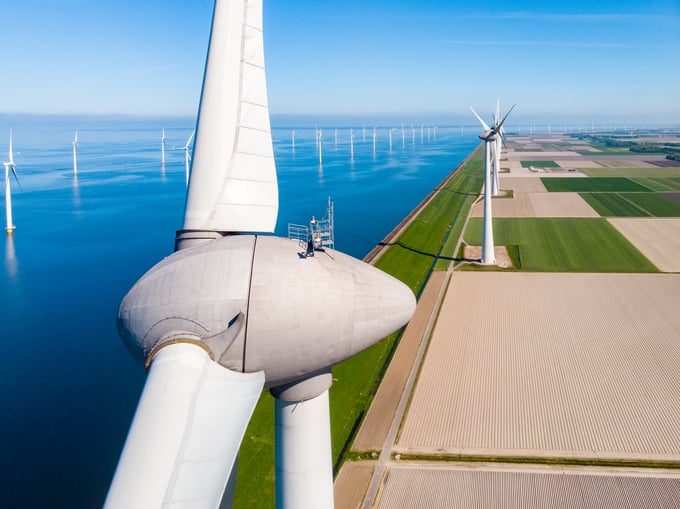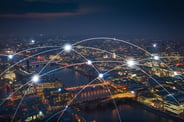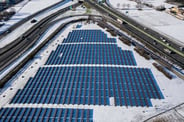“Complete clean energy production by 2035” was the ambitious clean energy goal set out by the prime minister at the Conservative party conference. But can the UK focus on renewable energy sources and eliminate fossil fuels from the energy mix in just 14 years?
A key part of the strategy to decarbonise the country’s energy supply is boosting renewable energy sources, especially wind power. In last year’s Ten Point Plan, the government pledged to quadruple offshore wind capacity, in theory generating enough wind energy to power every home in the UK.
We already have world-leading capacity, but the problem is that capacity is not the same as actual output. One of the reasons why the UK currently has soaring gas prices is that in the second quarter of 2021, renewable energy sources generated less of our electricity than in the same period of 2020. The proportion of our electricity generated by wind, solar and hydro was down 9.6%, despite a slight increase in capacity. Why? Blame it on the weather: low wind speeds and less sunshine.
The intermittency of renewable energy sources is an unavoidable fact of energy generation. Any valid strategy for decarbonising while still keeping the lights on has to take this into account, and this applies to businesses and other organisations with net zero goals as well as the UK as a nation. And the key to managing the unpredictability of renewable energy generation is data.
Data is the key to managing the intermittency of renewable energy
The wholesale energy market trades in half-hourly chunks, but most energy consumers do not get the benefit of this kind of granularity. You may have signed up to a “green” energy tariff, but you don’t know if the electricity your organisation consumes on a rainy Wednesday afternoon comes from wind, solar, gas or oil. Without this information, you can’t optimise your energy use to maximise the proportion of renewable energy sources.
ENTRNCE is solving this problem by providing technology that allows users to see the output of renewable generators in half-hourly increments, which means they can maximise energy consumption when renewable energy generation is high (for example, charging up their fleet of electric vehicles while the wind is blowing) and minimise consumption at times when fossil fuels are a bigger part of the mix. As the UK continues on its net zero journey, it will become vital that high-volume energy users get smarter about timing their consumption in this way.
The appetite among large organisations is already there. Microsoft and Google are among over a hundred global companies currently participating in a trial called EnergyTag to show that it is indeed practical to verify energy sourcing on an hourly basis. Most high-volume users are already used to smart meters that operate on a half-hourly basis when recording usage, so it is not surprising that they want this kind of detail in their sourcing as well.
Clean energy goals: Policy stepping up
The UK government is aware of these changing needs. The Department for Business, Energy and Industrial Strategy (BEIS) has put out a call for evidence on how to make energy tariffs more transparent for consumers. At present, retailers can offer a “green” tariff if the energy used by their customers matches energy generated from renewable energy sources. But this is currently calculated on a retrospective annual basis, which does not offer sufficient transparency. BEIS is concerned that this system does not make sense to many consumers, which may lessen overall trust in the concept of green energy.
We like to give the example of the commuter who asked how his train could be running on wind power when the wind wasn’t blowing; BEIS gives the example of the domestic user wondering how their home can be powered by solar energy in the middle of the night.
A move to make half-hourly data the standard will help consumers understand the reality of energy sourcing and perhaps change their own behaviour to minimise fossil fuel consumption in their homes. Completely decarbonising the UK’s energy by 2035 and hitting the clean energy goals is a huge challenge, and data is our best tool for tackling it.
Talk to an energy expert
To learn more about how data can be harnessed to align consumption with renewable energy generation, visit https://www.entrnce.com/transparent-energy-matching or request an in-depth one-on-one consultation with a knowledgeable energy expert. Request your free demo here.




